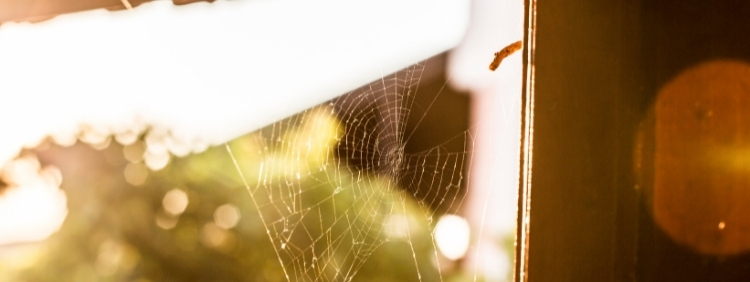 No Halloween decorations would be complete without a few spooky spider webs, but have you ever wondered why that is? It could be because Halloween décor is meant to be scary, and so many people are afraid of spiders, but it could be because spiders are much more noticeable in the fall, both outside and in your home. Not surprisingly, demand for spider removal services also increases at this time of year.
So, why do you seem to see so many more spiders during this time? The answer has to do, primarily, with the spiders’ life cycles. Although spiders vary widely in size, life expectancy, and reproductive behaviour, nearly all spiders follow the same basic life stages.
No Halloween decorations would be complete without a few spooky spider webs, but have you ever wondered why that is? It could be because Halloween décor is meant to be scary, and so many people are afraid of spiders, but it could be because spiders are much more noticeable in the fall, both outside and in your home. Not surprisingly, demand for spider removal services also increases at this time of year.
So, why do you seem to see so many more spiders during this time? The answer has to do, primarily, with the spiders’ life cycles. Although spiders vary widely in size, life expectancy, and reproductive behaviour, nearly all spiders follow the same basic life stages.
 No Halloween decorations would be complete without a few spooky spider webs, but have you ever wondered why that is? It could be because Halloween décor is meant to be scary, and so many people are afraid of spiders, but it could be because spiders are much more noticeable in the fall, both outside and in your home. Not surprisingly, demand for spider removal services also increases at this time of year.
So, why do you seem to see so many more spiders during this time? The answer has to do, primarily, with the spiders’ life cycles. Although spiders vary widely in size, life expectancy, and reproductive behaviour, nearly all spiders follow the same basic life stages.
No Halloween decorations would be complete without a few spooky spider webs, but have you ever wondered why that is? It could be because Halloween décor is meant to be scary, and so many people are afraid of spiders, but it could be because spiders are much more noticeable in the fall, both outside and in your home. Not surprisingly, demand for spider removal services also increases at this time of year.
So, why do you seem to see so many more spiders during this time? The answer has to do, primarily, with the spiders’ life cycles. Although spiders vary widely in size, life expectancy, and reproductive behaviour, nearly all spiders follow the same basic life stages.

